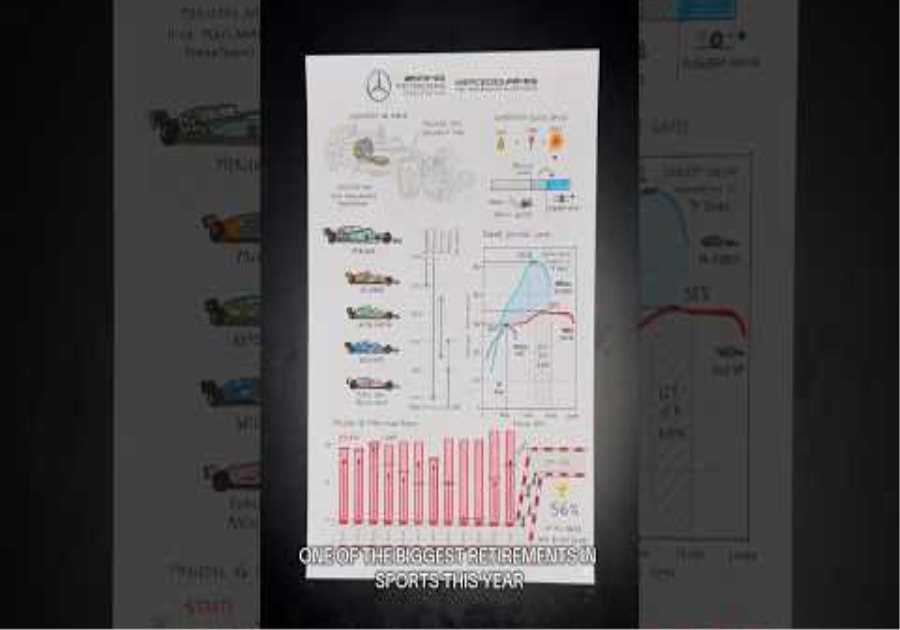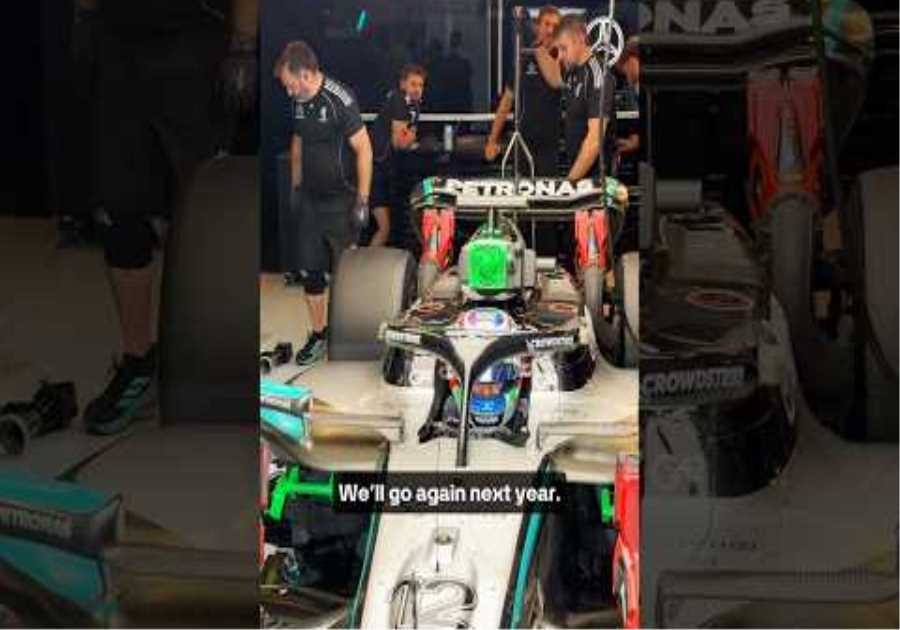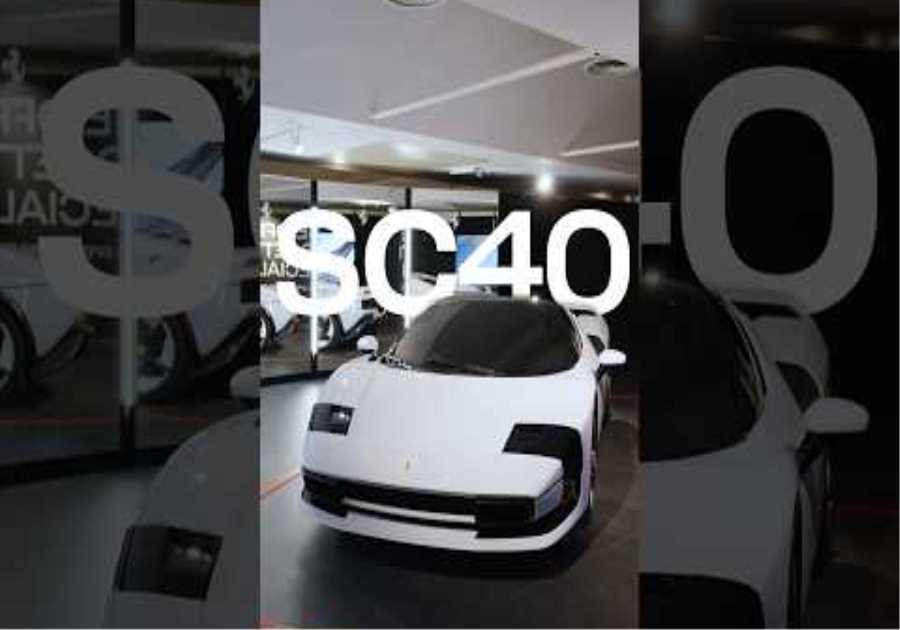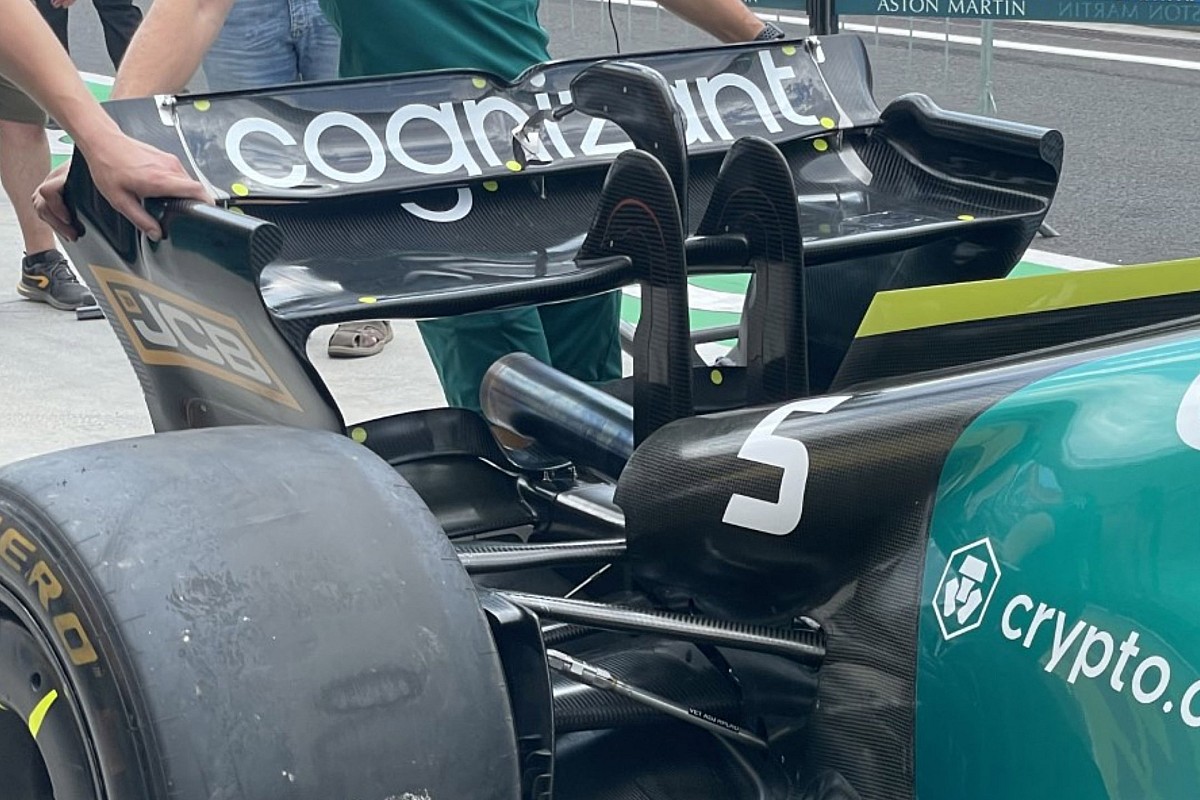
The new regulations had hoped to bid farewell to the traditional endplate and wing interaction of the past, with a curved transition between the elements.
This was designed to reduce the strength of the tip vortex, thereby limiting airflow disruption and help in the overall goal of making it easier for cars to follow one another.
For the Hungaroring weekend, Aston Martin has introduced a design which reverses the intent posed by the new regulations.
Its rear wing features a unique arrangement on the forwardmost portion of the endplate that allows the mainplane to butt up to it in a more traditional way, thus increasing its span and the downforce that can be generated.
The endplate’s vertical presence above the mainplane is an anomaly with these new regulations and is made possible due to the presence of the apostrophe-like rolled over section that has required the designers to reinterpret the radius and curvature required within the regulations.
Aston Martin AMR22 rear wing endplate
1/3
Photo by: Uncredited
Aston Martin AMR22 rear wing endplate
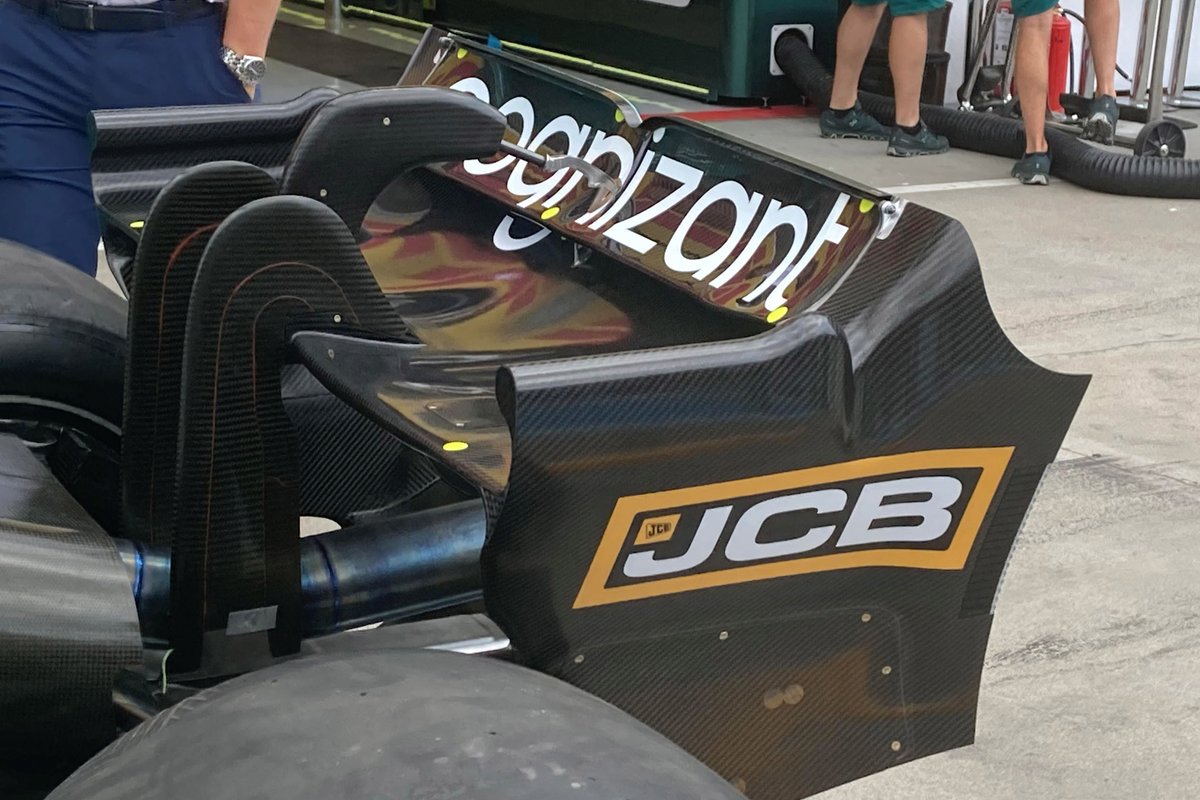
2/3
Photo by: Uncredited
Aston Martin AMR22 rear wing
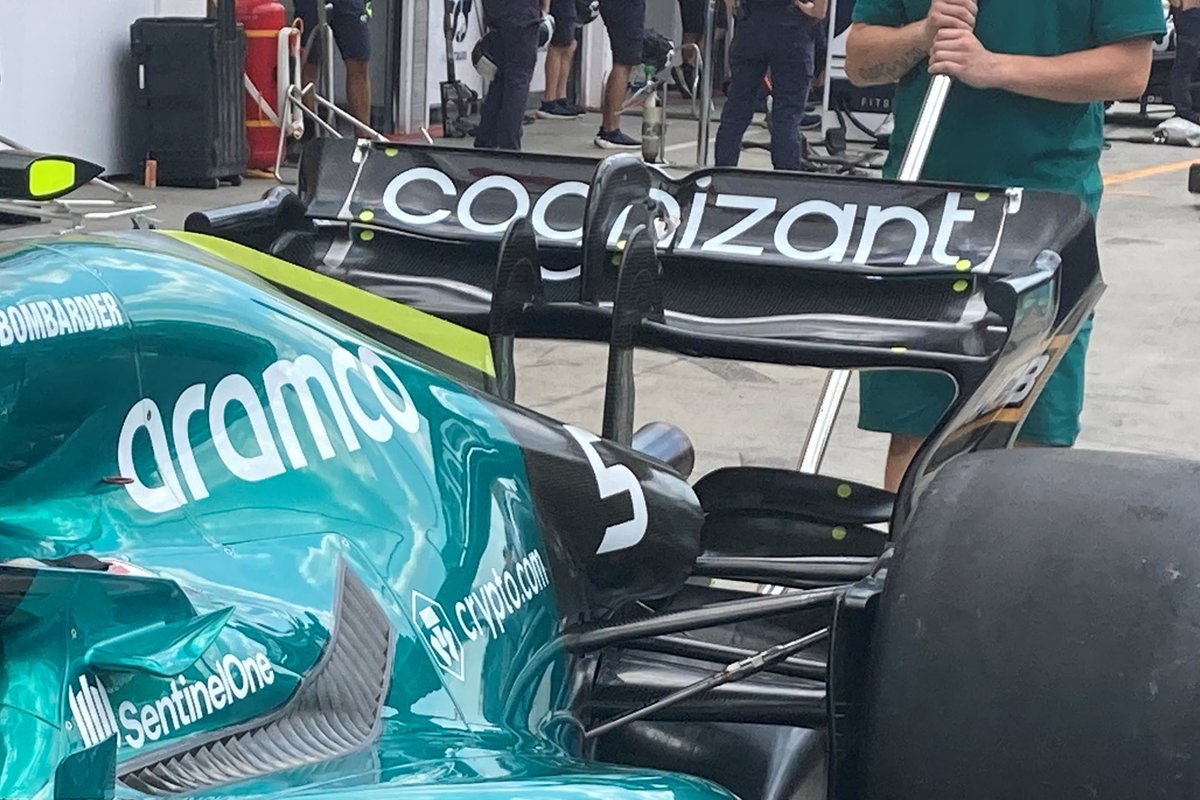
3/3
Photo by: Uncredited
In order to manage the airflow’s trajectory and the pressure distribution around this region, the team has also flared out the rearmost portion of the endplate at the intersection with the mainplane’s trailing edge, in order that the two work harmoniously.
This is also the result of the design constraints posed by the endplate and upper flap’s transition, with the designers unable to accomplish a similar feat at their intersection with what’s been done with the mainplane juncture.
It’s an altogether elegant solution, but the FIA may choose to look at it and try to rephrase the wording of the regulations to stifle any further developments in this direction in the future, given it goes against the overall aims of the F1 2022 rules overhaul.
For Aston Martin it adds another feather in the cap of a team that has always managed to find novel ways of interpreting the regulations, no matter the name above the door.


